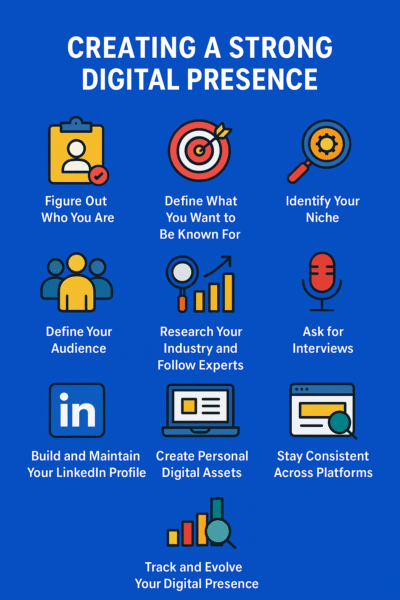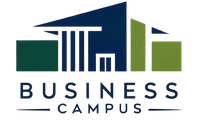🌟 “When people think of you, what comes to mind first? That, my friend, is your personal brand.”
In 2019, Ritesh, a mid-level manager in a Manufacturing company, was told he wasn’t “visible enough” despite delivering consistently. A colleague who spoke confidently in meetings and posted industry updates on LinkedIn got promoted over him. That was the moment he realized: skill alone isn’t enough — visibility matters. What he was missing was personal branding.
Today, mid-career professionals face a crowded marketplace. You may have a decade of experience, but without a clear personal brand, opportunities often pass by unnoticed. Let’s explore how you can build a powerful personal brand that works for you — both at work and online.
🎯 What Is Personal Branding and Why It Matters
At its core, personal branding is the intentional process of shaping the way people perceive you. It’s how your colleagues, bosses, clients, and online connections associate your name with specific qualities.
📊 A 2020 LinkedIn survey found that 70% of professionals believe branding helps them get recognized at work, while those with a strong online presence see better job offers and networking opportunities.
For mid-career professionals, branding is not vanity—it’s strategy. You’ve invested a decade into your career. Now, you need visibility and reputation to propel yourself into leadership.
💡 Check out 5–10 years of Experience: Your Career Sweet Spot to understand why this stage is critical for growth.
🌍 Why EVERYONE Needs a Personal Brand
💡 Insight: According to CareerBuilder, 57% of employers are less likely to interview a candidate they can’t find online. That means no online presence can be a liability.
Even if you never post on social media, your reputation exists. It’s in the stories colleagues share about you, in the way your name comes up during promotion discussions, and in the digital footprint you leave behind.
✅ For entrepreneurs, it’s how clients trust you.
✅ For managers, it’s how teams align with you.
✅ For employees, it’s how leaders decide you’re “ready” for bigger roles.
💼 Personal Branding at Work
Imagine two mid-level project leads. Both deliver results. One also speaks up in meetings, mentors juniors, and shares industry insights in the company Slack. Who’s more likely to be seen as leadership material?
Personal branding at work is about visibility and impact:
- Take ownership of projects.
- Share credit generously.
- Communicate your wins without bragging.
- Volunteer for cross-functional tasks.
💡 Explore How to Grow Into a Leadership Role for step-by-step strategies on positioning yourself at work.
✨ Creating a Strong Digital Presence
Your personal brand is no longer just what people say about you in a meeting room — it’s what shows up when someone Googles your name. For mid-career professionals, this digital footprint can make or break opportunities. Recruiters, clients, and even potential collaborators often form their first impression of you online. Let’s break down how to build a strong digital presence step by step:
🎯 1. Figure Out Who You Are
Before you start posting on LinkedIn or building a website, take time to define your core values, strengths, and career goals. Ask yourself:
- What do colleagues consistently compliment me on?
- What problems do I solve better than most people?
- What kind of opportunities excite me for the next 5–10 years?
A personal brand that isn’t rooted in authentic self-awareness feels hollow. Use frameworks like Gallup CliftonStrengths or even simple journaling to clarify your professional identity.
🏆 2. Define What You Want to Be Known For
Think of personal branding as career positioning. Just as companies want to “own” a word in the customer’s mind (e.g., Volvo = safety), you need to define what you want to stand for. For example:
- A finance professional could position themselves as the “data-driven strategist who translates numbers into business growth.”
- A project manager could brand themselves as the “calm leader who thrives in chaos.”
Clarity here ensures your LinkedIn posts, interviews, and even casual conversations all point in the same direction.
🔍 3. Identify Your Niche
Standing out requires specialization. Broad personal branding like “I’m a marketing professional” won’t cut through the noise. Instead, zoom in:
- “I help SaaS startups create growth-focused content strategies.”
- “I specialize in sustainable supply chain management for retail brands.”
This laser focus makes you memorable and gives recruiters a reason to approach you.
👥 4. Define Your Audience
Personal branding is not just about you — it’s about who you serve.
Ask:
- Are you targeting recruiters, clients, or senior leadership?
- Are you building credibility with peers in your industry or mentoring juniors?
Once your audience is defined, you can adapt your tone, platform, and content accordingly. For instance, Twitter (X) may be perfect for industry commentary, while LinkedIn suits career highlights and thought leadership.
📚 5. Research Your Industry and Follow Experts
Your digital presence should reflect that you’re in touch with trends. Spend time following:
- Industry reports from McKinsey, Gartner, Deloitte
- Top voices on LinkedIn & Medium
- Relevant podcasts, webinars, and newsletters
Engage actively — don’t just consume. Comment thoughtfully on industry posts, share insights, and gradually position yourself as a voice worth listening to.
🎤 6. Ask for Interviews & Share Them
This is a power move in personal branding. Invite experts or peers for short interviews (via LinkedIn Live, a blog, or even a YouTube series). Benefits:
- You expand your network instantly.
- You borrow credibility from respected voices.
- You show initiative and thought leadership.
Even a short written Q&A published on LinkedIn can amplify your visibility.
💻 7. Build and Maintain Your LinkedIn Profile (Your Digital Resume)
LinkedIn is the epicenter of professional branding. A few must-do steps:
- Use a professional headshot (profiles with photos get 21x more views).
- Craft a headline beyond your job title (e.g., “Helping Enterprises Scale with Cloud Solutions | Speaker | Mentor”).
- Use the About section to narrate your story, not just list skills.
- Showcase thought leadership with articles, polls, or posts.
- Request and display recommendations from peers and managers.
🌐 8. Create Personal Digital Assets
Owning your name online is powerful. Consider:
- A personal website or portfolio (simple WordPress or Wix site).
- A custom domain email ID (instead of generic Gmail).
- Publishing on Medium or Substack to share insights.
This not only strengthens your personal brand but also builds Google visibility. When someone searches for you, they find curated, professional content instead of scattered mentions.
📱 9. Consistency Across Platforms
Nothing dilutes personal branding faster than inconsistency. Ensure:
- Your profile photo, tagline, and tone align across LinkedIn, Twitter, company bio, and presentations.
- Your messaging doesn’t confuse — for example, don’t call yourself a “sustainability consultant” in one place and “marketing strategist” in another.
Consistency breeds recognition. Recognition builds trust.
📊 10. Track and Evolve Your Digital Presence
Personal branding is not one-and-done. Monitor your progress:
- Google yourself every 3–6 months.
- Use tools like Google Alerts to track mentions.
- Audit your LinkedIn analytics (profile views, engagement trends).

🤝 Embrace Networking
Personal branding thrives on relationships.
- Attend industry conferences.
- Join LinkedIn groups.
- Contribute to professional communities.
- Say yes to coffee chats.
Networking isn’t about collecting contacts—it’s about nurturing meaningful connections that reinforce your brand.
⭐ Ask for Recommendations
📌 On LinkedIn, request recommendations from colleagues, managers, or clients. These endorsements amplify your credibility.
📊 According to LinkedIn data, profiles with recommendations are 3x more likely to receive opportunities.
💡 Want to avoid mistakes that dilute your reputation? Read Top 10 Career Mistakes to Avoid
🎨 Bringing It All Together
- 🧩 Clarity of identity → Know your story.
- 📌 Niche focus → Don’t be generic.
- 🌐 Digital presence → LinkedIn, blog, podcasts.
- 🤝 Networking → Relationships power recognition.
- ⭐ Recommendations → Third-party validation matters.
💻 Further reads





Leave a Reply